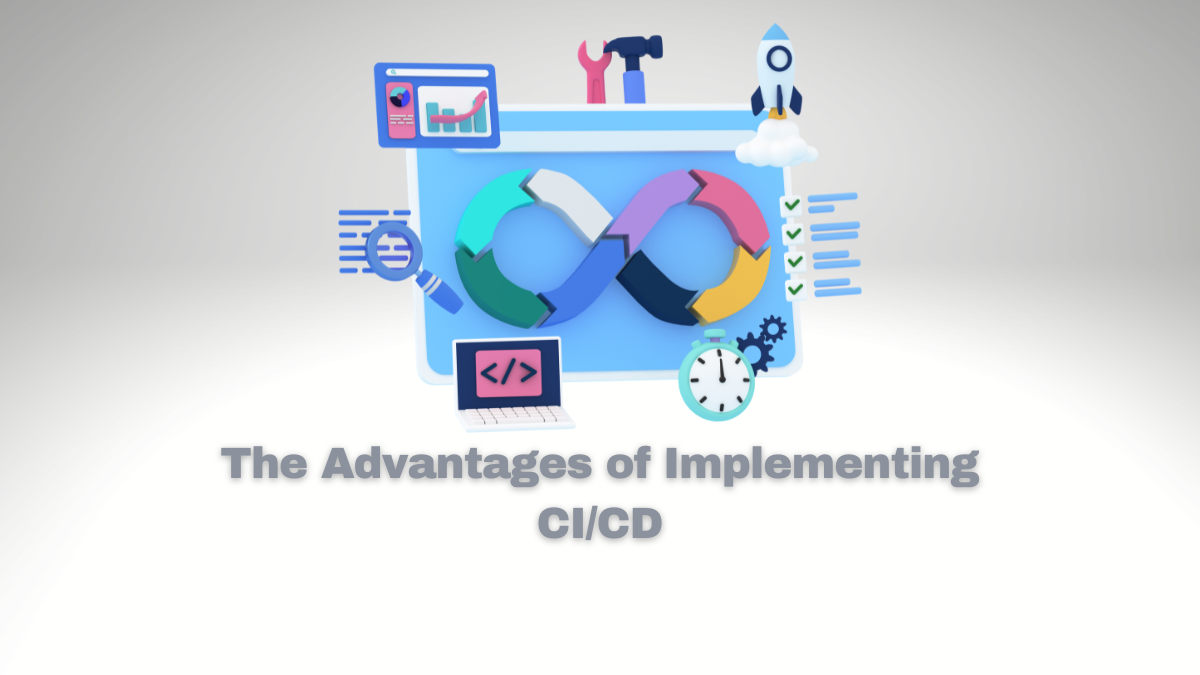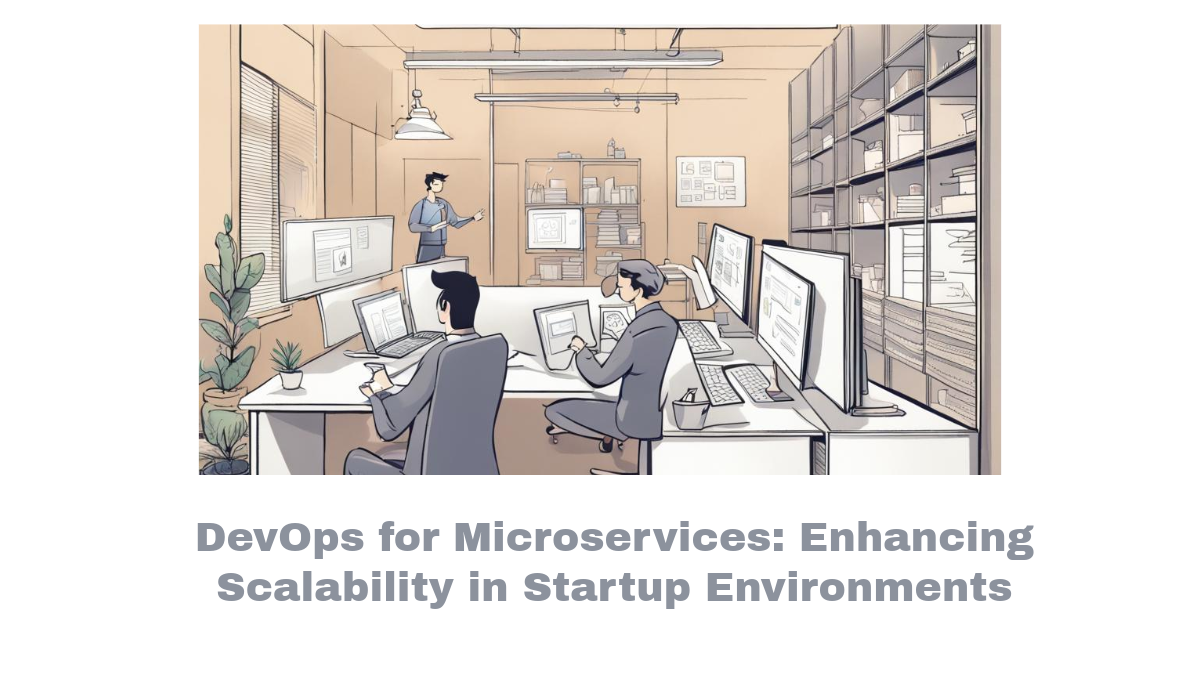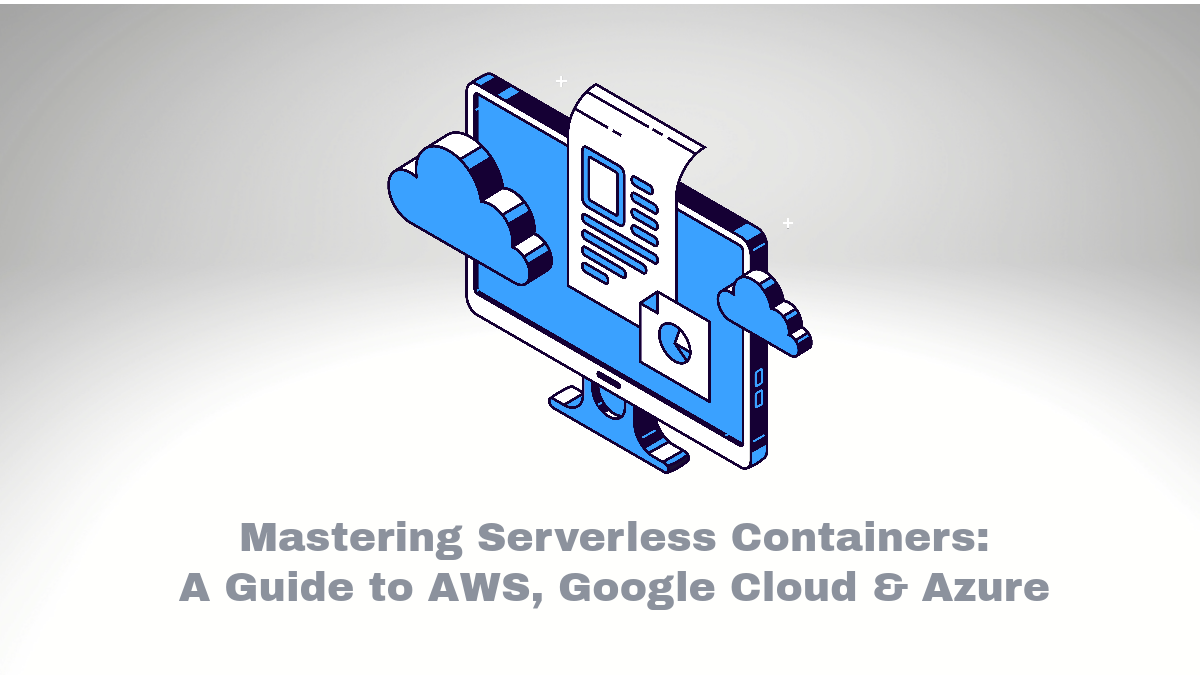The Advantages of Implementing CI/CD

In the fast-paced world of modern software development, staying competitive and delivering high-quality software is paramount. This chapter provides an overview of Continuous Integration and Delivery (CI/CD) and emphasizes its significance in streamlining development processes.
1.1. Overview of CI/CD in Modern Software Development
The Need for Speed
In the ever-evolving landscape of software development, agility is the name of the game. Traditional development methods, with infrequent releases and manual interventions, no longer suffice. Businesses demand rapid software deployment, and this is where CI/CD shines.
CI/CD, a methodology and set of practices, focuses on automating the software delivery pipeline. It encompasses everything from code integration to testing and, ultimately, deployment. By automating these critical steps, CI/CD accelerates the pace of development, making it possible to release software changes swiftly and reliably.
Embracing DevOps
CI/CD is closely intertwined with the DevOps philosophy. It bridges the gap between development and operations teams, fostering collaboration and communication. DevOps principles emphasize breaking down silos, enhancing transparency, and aligning the goals of these traditionally separate domains.
The result? A more streamlined and efficient software development lifecycle that delivers value to end-users faster. CI/CD plays a pivotal role in making DevOps a reality.
Key Objectives of CI/CD
At its core, CI/CD aims to achieve the following objectives:
- Frequent Code Integration: Developers continuously integrate their code changes into a shared repository, ensuring the codebase is always up-to-date.
- Automated Testing: Robust automated testing processes detect errors early in the development cycle, preventing them from reaching production.
- Continuous Deployment: CI/CD pipelines automate the deployment of code changes, reducing the time and effort required for release.
- Feedback Loops: Rapid feedback loops enable developers to iterate and improve code quality promptly.
1.2. The Significance of CI/CD in Streamlining Processes
Achieving Efficiency
Efficiency is the linchpin of CI/CD. Development teams can focus on innovation and value creation by automating repetitive tasks, such as code integration, testing, and deployment. This results in faster development cycles and shorter time-to-market.
Reducing Risk
CI/CD’s automated testing and deployment processes significantly reduce the risk of introducing bugs or issues into production environments. Bugs that might have gone unnoticed until late in the development cycle are caught early, resulting in higher-quality software.
Enhancing Collaboration
CI/CD encourages collaboration among developers, testers, and operations teams. It fosters a culture of shared responsibility, where everyone is invested in delivering reliable software. Communication barriers are broken down, leading to smoother workflows.
Meeting Customer Demands
In today’s consumer-driven market, customers expect regular updates and improvements to software products. CI/CD enables businesses to meet these demands by delivering new features and enhancements swiftly and continuously.
Chapter 2. Understanding Continuous Integration and Delivery (CI/CD)
In the realm of modern software development, the adoption of Continuous Integration and Delivery (CI/CD) has become more than just a best practice—it’s a necessity for staying competitive and delivering software efficiently. In this chapter, we will delve into the core concepts of CI/CD, understand what Continuous Integration (CI) and Continuous Delivery (CD) mean, and trace the evolution of these practices in software development.
2.1. What Is Continuous Integration (CI)?
The Situation
Traditionally, software development was a linear process where developers worked in isolation for extended periods, contributing code independently. Integrating code changes from multiple developers into a shared codebase was often a headache. It resulted in conflicts, delays, and a lot of manual effort to ensure everything worked together.
The Complication
As software projects grew in complexity and development teams expanded, the challenges of integrating code became even more pronounced. Delayed integration led to a higher risk of conflicts and defects, ultimately affecting the quality and timeliness of software releases.
The Implication
Software development needed a paradigm shift. The implication was clear: integrate code changes frequently to catch integration issues early in the development process.
The Position
Continuous Integration (CI) emerged as the solution to this problem. CI is a software development practice where developers regularly integrate code changes into a shared repository. Each integration triggers an automated build and a battery of tests to ensure that the changes haven’t introduced defects.
CI emphasizes creating a culture of frequent collaboration, making small, incremental code changes, and automating the testing and integration processes. This practice ensures that the software is always in a state where it can be deployed without causing unexpected issues.
The Action
Implementing CI involves the following key steps:
- Developers regularly commit code changes to a version control system (e.g., Git).
- Automated build systems compile the code.
- Automated tests, including unit tests and integration tests, are run.
- If the tests pass, the code changes are considered for integration into the main codebase.
2.2. What Is Continuous Delivery (CD)?
The Situation
While CI solved the problem of integration, it didn’t address the challenge of reliably delivering software to users. Historically, the process of deploying software to production environments was a manual, error-prone, and time-consuming task.
The Complication
Manual deployments were fraught with risks. Even if code integration was smooth, the manual deployment process could introduce errors, leading to downtime, outages, and customer dissatisfaction.
The Implication
In order to keep up with the demands of modern software development, there was a necessity to implement a practice that would extend the benefits of continuous integration (CI) into the delivery process. The clear implication was that the deployment process must be automated to ensure that any changes to the code could be released to production quickly and reliably.
The Position
Continuous Delivery (CD) stepped in to address this need. The CD is a software engineering practice where code changes that have passed through CI are automatically deployed to a production-like environment. This practice ensures that software is always in a deployable state, allowing teams to release it to production at any time.
The Action
Implementing CD involves the following key steps:
- Automated deployment pipelines are created to take code changes from the CI environment to a production-like staging environment.
- Extensive automated testing, including user acceptance testing, is performed in the staging environment.
- If all tests pass, the code changes are automatically deployed to production.
2.3. The Evolution of CI/CD in Software Development
The Situation
As software development practices evolved and the need for speed and reliability increased, CI and CD practices continued to mature.
The Complication
The complications of manual processes, delayed releases, and the risk of human error persisted in organizations that hadn’t adopted CI/CD.
The Implication
The implication was clear: Organizations that embraced CI/CD gained a competitive advantage by delivering higher-quality software more quickly.
The Position
CI/CD practices became a cornerstone of DevOps—a cultural and technical movement that emphasizes collaboration, automation, and a holistic approach to software delivery. The position was that CI/CD was not just a set of practices; it was a cultural shift in how software development and delivery were approached.
The Action
Organizations that adopted CI/CD:
- Reduced the time from code commit to production deployment.
- Improved software quality with automated testing.
- Enhanced collaboration between development and operations teams.
- Gained a competitive edge in the market.
In the following chapters, we will explore the benefits of implementing Single Application CI/CD and how it addresses the challenges and complexities of modern software development.
Chapter 3. The Benefits of Implementing Single Application CI/CD
In the fast-paced world of software development, staying ahead of the competition means embracing efficient practices that streamline your processes. Single Application CI/CD is one such practice, and in this chapter, we’ll explore the significant advantages it offers to modern software development teams.
3.1. Advantages of Single Application CI/CD
The Situation
Software development teams often grapple with the complexity of managing multiple tools and integrations to support their CI/CD pipelines. Each tool comes with its own learning curve, maintenance requirements, and potential compatibility issues. This situation can lead to inefficiencies and a drain on resources.
The Complication
Managing a complex toolchain can be challenging and time-consuming. Teams may struggle to keep up with updates, plugins, and integrations, leading to bottlenecks and increased risk of errors.
The Implication
The implication is clear: there’s a need for a more streamlined and integrated approach to CI/CD. Teams require a solution that simplifies their workflows, reduces maintenance overhead, and ensures seamless collaboration across the development pipeline.
The Position
Single Application CI/CD offers a solution to these challenges. It advocates the use of a single, comprehensive platform for all CI/CD needs. This platform consolidates various CI/CD functionalities, including code integration, testing, deployment, and monitoring, into a unified environment.
The Action
Implementing Single Application CI/CD involves the following key actions:
- Centralized Management: Teams can manage their entire CI/CD process within a single application, eliminating the need to juggle multiple tools and interfaces.
- Streamlined Workflows: With all CI/CD functions in one place, workflows become more straightforward and efficient. Developers can easily set up pipelines, trigger builds, run tests, and deploy code without navigating between different tools.
- Reduced Maintenance: Single Application CI/CD platforms typically provide a more stable and consistent environment, reducing the time and effort required for maintenance. Updates and upgrades are simplified, ensuring that teams always have access to the latest features and improvements.
- Enhanced Collaboration: Collaboration is improved as developers, testers, and operations teams can work within the same interface. This promotes transparency and accelerates communication across the development lifecycle.
- Simplified Training: Onboarding new team members becomes more manageable when there’s a single application to learn. Training efforts are streamlined, and teams can quickly become productive.
3.2. Eliminating Costly Integrations and Plugin Maintenance
The Situation
In a multi-tool CI/CD environment, integrating various tools and plugins often comes at a cost. Not only does it require initial setup, but ongoing maintenance and troubleshooting can also consume valuable resources.
The Complication
Maintaining integrations and plugins can be complex and time-intensive. As tools evolve and new versions are released, compatibility issues may arise, causing disruptions in the CI/CD pipeline.
The Implication
The implication is clear: organizations need to consider the long-term costs and complexities associated with managing integrations and plugins in their CI/CD infrastructure.
The Position
Single Application CI/CD takes a different approach. It promotes the use of a single, integrated platform that minimizes the need for external integrations and plugins. This approach simplifies the CI/CD landscape and reduces the potential points of failure.
The Action
By adopting Single Application CI/CD:
- Integration Challenges Are Reduced: Teams can rely on the native features of the single application, reducing the dependency on external integrations.
- Plugin Maintenance Is Minimized: With fewer plugins to manage, the maintenance burden is significantly reduced. Teams can focus their efforts on other critical tasks.
- Risk of Compatibility Issues Is Mitigated: Since the single application is designed to work cohesively, the risk of compatibility issues between various tools is minimized.
- Resource Allocation Is Optimized: Resources previously dedicated to managing integrations and plugins can be redirected towards more strategic initiatives, such as enhancing the CI/CD process or improving code quality.
In the following chapters, we’ll delve deeper into the specific advantages of CI/CD in detail and explore how it transforms the software development landscape.
Chapter 4. Advantages of CI/CD in Detail
In the ever-evolving landscape of software development, Continuous Integration and Continuous Delivery (CI/CD) have emerged as indispensable practices. These approaches offer a plethora of advantages that not only accelerate development but also enhance software quality. In this chapter, we delve into the intricate details of the benefits CI/CD brings to modern software development.
4.1. Fewer Handoffs: Simplifying the Development Pipeline
The Situation
Traditionally, software development involves a sequence of handoffs between different teams and departments. Developers would pass their code to testers, who in turn handed it over to operations for deployment. This process was not only time-consuming but also prone to miscommunication and errors.
The Complication
Handoffs in the development pipeline introduced complexity and inefficiency. Each transition between teams represented a potential point of failure, and misalignment between teams could lead to costly delays and defects.
The Implication
The implications were clear: the development pipeline needed streamlining. Reducing the number of handoffs could accelerate development, improve communication, and minimize the risk of errors slipping through the cracks.
The Position
CI/CD tackles this challenge head-on. By automating the integration, testing, and deployment processes, CI/CD significantly reduces the need for manual handoffs. Code changes flow seamlessly through the pipeline, with automated tests and quality checks at each stage.
The Action
Implementing CI/CD involves several key actions:
- Automated Builds: Developers commit their code to a shared repository, triggering automated builds that compile and package the application.
- Continuous Testing: Automated tests are executed with every code change, ensuring that any issues are detected early in the development cycle.
- Incremental Deployments: CD automates the deployment of code changes to various environments, from development and testing to staging and production.
- Feedback Loops: CI/CD provides instant feedback to developers, allowing them to address issues promptly.
4.2. Increased Development Speed: Accelerating the Process
The Situation
In today’s fast-paced world, software development teams face immense pressure to deliver features and updates rapidly. Traditional development methodologies often struggle to keep up with this demand.
The Complication
Sluggish development processes can result in delayed feature releases, frustrated customers, and missed market opportunities. To stay competitive, organizations need to accelerate their development timelines.
The Implication
The implication is evident: faster development is imperative. Speeding up the development process can help organizations respond to customer needs more swiftly and gain a competitive edge.
The Position
CI/CD is positioned as a solution to this challenge. By automating and optimizing various development tasks, CI/CD significantly reduces the time required to move from code development to deployment.
The Action
Accelerating development with CI/CD involves the following actions:
- Automated Testing: Automated testing ensures that code changes are thoroughly examined for defects, reducing the need for time-consuming manual testing.
- Parallel Workflows: CI/CD enables parallel development and testing, allowing multiple features or bug fixes to progress simultaneously.
- Continuous Deployment: With CD, code changes can be automatically deployed as soon as they pass tests, eliminating deployment bottlenecks.
- Faster Feedback: CI/CD provides rapid feedback on code quality, enabling developers to make immediate improvements.
CI/CD empowers development teams to keep pace with the demands of modern software development, delivering high-quality software at an accelerated rate. In the subsequent sections, we will explore more facets of CI/CD and the benefits they offer to software development organizations.
Chapter 5. Measuring Productivity with CI/CD
In the world of modern software development, metrics and measurements are the compasses that guide us. They help us navigate the complex landscape of coding, testing, and deployment, ensuring we stay on course. In this chapter, we’ll delve into the art and science of measuring productivity with Continuous Integration and Continuous Delivery (CI/CD).
The Situation
In the dynamic realm of software development, it’s essential to gauge how efficient and effective your processes are. Measuring productivity isn’t just about keeping score; it’s about optimizing your development pipeline and ensuring that your team delivers high-quality software consistently.
The Complication
Without proper metrics and measurements, organizations might find themselves in the dark, unable to identify bottlenecks, inefficiencies, or areas where improvements are needed. This lack of visibility can result in delayed releases, increased costs, and frustrated teams.
The Implication
The implication is clear: to thrive in the digital age, you need to measure what matters. By leveraging the right metrics, you can gain insights into your development processes, make data-driven decisions, and continuously improve.
The Position
CI/CD provides a robust framework for measuring productivity throughout the software development lifecycle. By automating and standardizing various aspects of development, it offers a wealth of data that can be transformed into actionable insights.
The Action
5.1. Evaluating the Entire Software Development Lifecycle (SDLC)
To measure productivity effectively, organizations need to look at the big picture. This involves evaluating the entire Software Development Lifecycle (SDLC), from code creation to deployment and beyond. Key metrics in this area include:
- Cycle Time: The time it takes for code changes to go from development to production.
- Lead Time: The time it takes from the initiation of a feature or bug fix to its deployment.
- Deployment Frequency: How often code changes are deployed to production.
5.2. Identifying Bottlenecks and Streamlining Workflows
One of the significant advantages of CI/CD is its ability to uncover bottlenecks in the development pipeline. Metrics related to the time spent in different stages of the pipeline can highlight areas that require attention. Some key actions in this regard include:
- Continuous Monitoring: Implementing monitoring and logging to track the performance of applications in production.
- Automated Testing: Measuring the time it takes for automated tests to run and identifying slow or flaky tests.
- Feedback Loops: Implementing feedback mechanisms to provide real-time insights to developers and teams.
By continuously monitoring these metrics and acting on the insights gained, organizations can improve their development processes, increase Efficiency, and deliver higher-quality software.
Measuring productivity with CI/CD isn’t just about collecting data; it’s about using that data to drive improvements, optimize workflows, and ensure that your software development efforts align with your business goals. In the next chapter, we will explore the challenges organizations face when implementing CI/CD and how to overcome them.
Chapter 6. Challenges in CI/CD Implementation
The journey towards implementing Continuous Integration and Continuous Delivery (CI/CD) is undoubtedly rewarding, but it’s not without its fair share of challenges. In this chapter, we will explore the common obstacles organizations face when adopting CI/CD, the suboptimal workflows caused by tool limitations, and the haunting specter of pipeline failures and a lack of visibility.
Common Obstacles in CI/CD Adoption
Resistance to Change
One of the primary hurdles in adopting CI/CD is resistance to change. Teams that have been following traditional development processes may be reluctant to embrace automation and CI/CD practices. Convincing stakeholders of the benefits and facilitating a smooth transition is critical.
Legacy Systems
Organizations with legacy systems often find it challenging to integrate CI/CD practices seamlessly. Legacy systems may lack the necessary APIs or infrastructure required for automation, leading to complex workarounds and additional development efforts.
Skill Gaps
CI/CD adoption necessitates a shift in skill sets. Teams may need to acquire expertise in automation, scripting, and CI/CD toolchains. Skill gaps can hinder the implementation process and require time and resources for upskilling.
Suboptimal Workflows Caused by Tool Limitations
Toolchain Mismatch
Selecting the right CI/CD tools is crucial, and a mismatch can lead to suboptimal workflows. Incompatibility between tools can result in data silos, inefficient communication, and integration challenges.
Scalability Issues
As organizations grow, their CI/CD needs evolve. Tools that worked well initially may struggle to scale. Ensuring that the chosen tools can accommodate increased workload and complexity is essential.
Pipeline Failures and Lack of Visibility
Pipeline Failures
One of the most nerve-wracking challenges is pipeline failures. A failed pipeline can disrupt the entire development process, leading to delays and potentially impacting the quality of releases. Identifying the root causes of failures promptly is crucial for maintaining a smooth workflow.
Lack of Visibility
A lack of visibility into the CI/CD pipeline can be a nightmare for development teams. Without real-time insights and monitoring, it’s challenging to pinpoint bottlenecks, track progress, and make informed decisions.
The Path Forward
Addressing these challenges requires a strategic approach. Organizations should invest in change management, offer training and development opportunities to bridge skill gaps, and carefully evaluate and select CI/CD tools that align with their current and future needs. Additionally, robust monitoring and alerting systems can help catch pipeline failures and provide the visibility needed to optimize workflows.
As organizations navigate the complexities of CI/CD adoption, they must remember that these challenges are manageable. With the right strategies, tools, and commitment to continuous improvement, organizations can reap the full benefits of CI/CD while mitigating potential roadblocks. In the next chapter, we’ll delve into the complexities of complex toolchains and integration challenges, exploring their role in the CI/CD landscape.




Comments